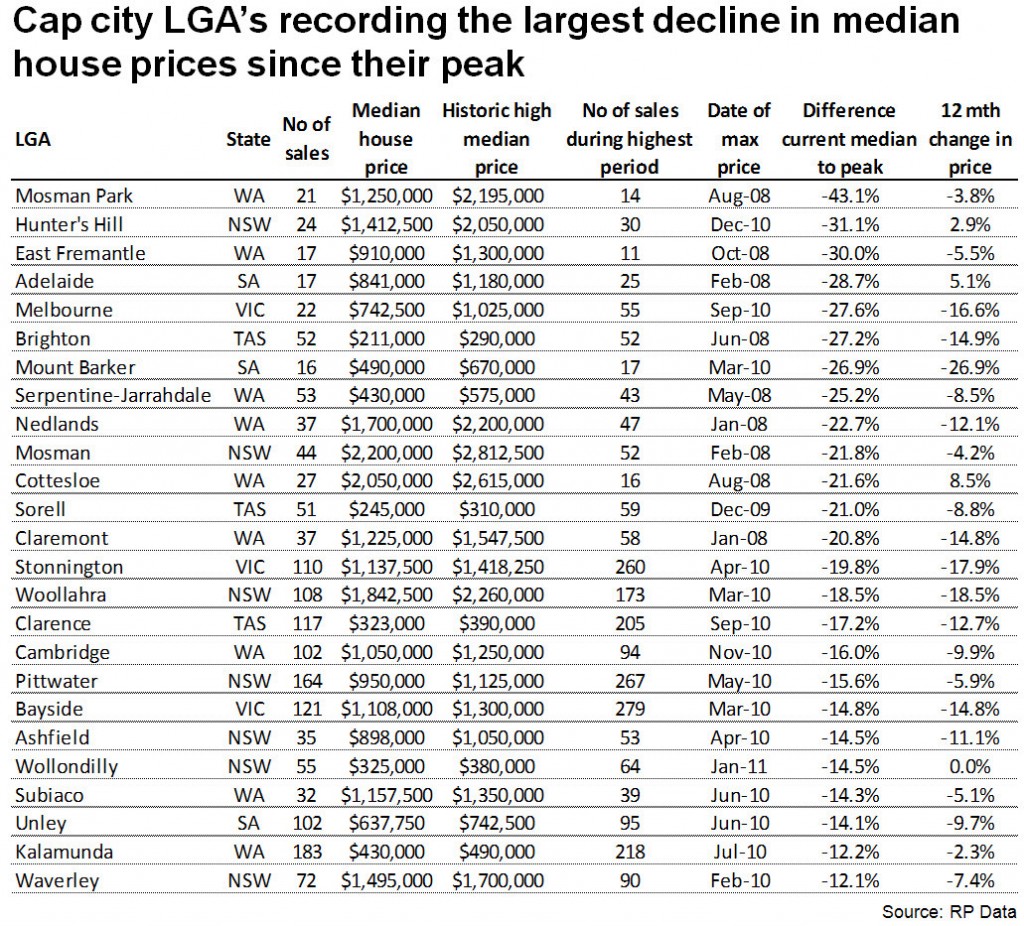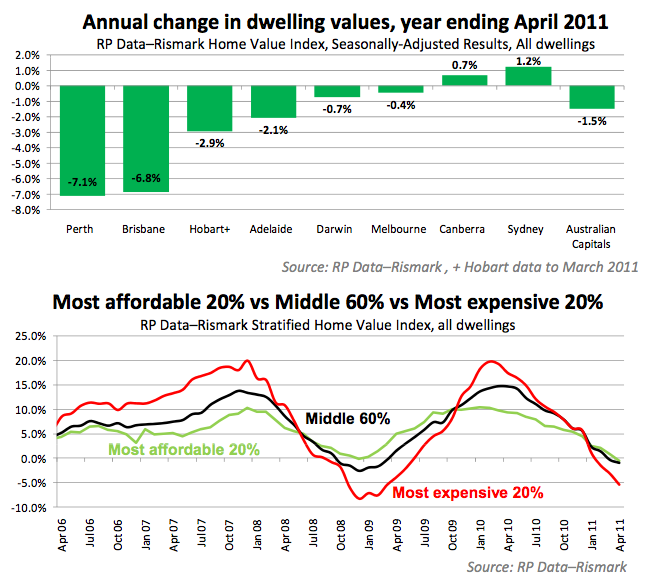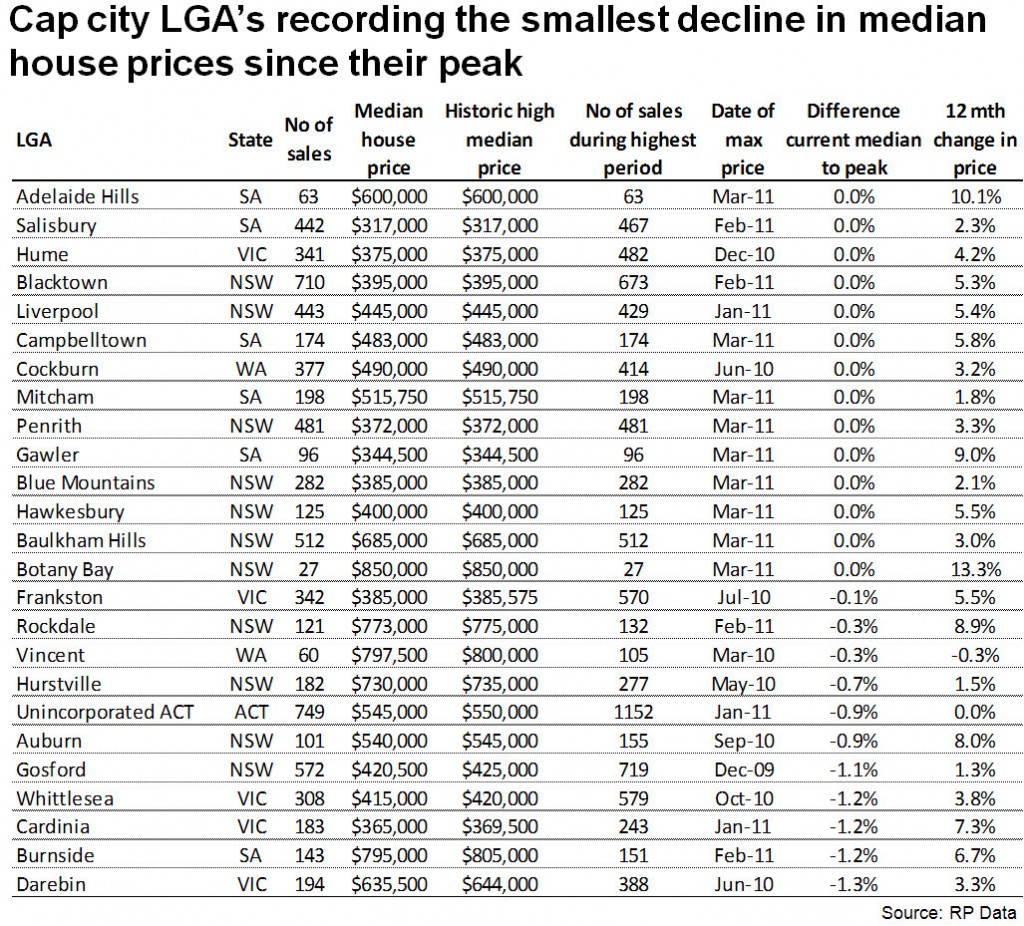RPData’s latest newsletter highlights that the housing market is falling unevenly, with the top of the market taking a bigger hit than the rest of the market at this stage.
With the premium market underperforming, many of the higher priced capital city regions have recorded a significant decline in median house prices since they peaked whereas more affordable markets are recording better housing market conditions.
During the March 2011 quarter, the median house price across the combined capital cities was recorded at $478,000. Recent results from the RP Data – Rismark Home Value Indices have also shown that the premium housing market is currently the weakest performer. Over the 12 months to April 2011, the 20% of most expensive suburbs within the combined capital cities recorded a value fall of -5.4% compared with a -0.5% fall at the most affordable end and -0.9% decline across the broad middle 60% of the market.
Over the year to April 2011, capital city home values have fallen by -1.5%, given this, there are many regions across the capitals that have recorded a decline in housing prices. As always, there are also a number of regions that have continued to record growth in median selling prices.
Although I think it is a little statistically dubious to talk about medians in low volume markets, there certainly does seem to be a problem at the top-end of the market. However, this isn’t exactly a new phenomena. RPData’s own charts from a previous media release shows that the top 20% of the market rides the “highs higher and the lows lower” (red line-second chart ). The other sectors of the market follow the same trend but at a lower variance.
RPData’s newsletter continues with a discussion of the suburbs that are still growing in price.
At the other end of the spectrum, a number of capital city regions have their median house price holding firm at record highs. Across all capital cities, just 14 areas have current median house prices which are recorded at the historic high.
And concludes with:
This analysis certainly supports the broad trends which indicate that the weak performance of the premium sector of the market is having a significant impact on the overall market and subsequently sentiment also.
The premium sector is being impacted by a perfect storm of forces, namely: consumer conservatism, higher interest rates, poorly performing equities markets (both in Australia and nationally), shaky economic conditions globally and low levels of business and consumer confidence. With subdued residential property markets likely to persist over the next year, we anticipate that the premium and most affordable segments will underperform. The most affordable sector will likely see demand dampened by interest rate rises which impact lower income households and the premium sector will be hampered by those forces previously detailed.
I agree with this analysis although I once again note RPData does not mention Australia’s demographics and its effects on the market over the coming years. Maybe they do not see it as an issue? I do, however, get the feeling that RPData is trying to move the goal-post on their previous “soft landing” rhetoric. They are now suggesting that it is not an issue of concern that the market is falling overall, because it is only the top end of the market that is having any real problems. The rest of the market is “in for a soft landing”.
Maybe I am being a bit hard on them, but this sudden focus on splitting the market into sectors when it is in decline is … “interesting”. As you can see from their longer chart, the market ultimately moves together, and by their own admission there are a large number of factors against the housing market at present. This all means that housing investment is now an activity for people who were able to explain 16 months ago why Adelaide Hills would be worth more in the future, but Adelaide would not.
If you are not one of those people then, in my opinion, you should leave your money in the bank.



